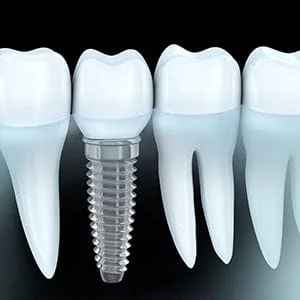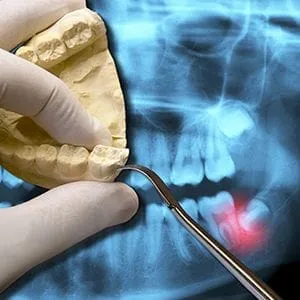If you are looking for a special dental treatment then there could be something available in the area of Advanced Dentistry. This area of Dentistry offers special services to help you with living with a beautiful smile. The procedures range from Laser Dentistry to the fine art of Sedation Dentistry. The procedures are usually preliminary procedures that help in the final outcome of the Dental procedure.
ULTRASONIC CLEANING - IMPLANTS - SINUS LIFT - BONE GRAFT - CEREC ONE VISIT DENTISTRY - ROOT CANAL TREATMENT - NOISELESS DENTISTRY
ULTRASONIC CLEANING

After a thorough, professional tooth cleaning, you know that your teeth look brighter and feel fresher. But tooth cleaning isn't just about appearances. It's the primary means of preventing and treating periodontal (gum) disease. Many studies have demonstrated a possible link between periodontal health and overall (systemic) health — which means regular tooth cleaning may benefit not just your mouth, but your whole body.
Why do teeth need special cleaning? Over time, dental plaque (a naturally occurring bacterial biofilm) and stains build up on tooth surfaces. Dental calculus (also called tartar), a harder deposit, can then form both above and below the gum line. A thorough dental cleaning removes these substances from the teeth, and helps keep disease-causing bacteria from proliferating.
Tooth cleaning is usually accomplished by the non-surgical technique of scaling, sometimes called “root debridement.” It's typically a relatively painless procedure in which small dental instruments are used to physically remove deposits from the surfaces of teeth. At one time, scaling was performed entirely with manual tools. But in the last several decades, the ultrasonic scaler has changed all that.
DENTAL IMPLANTS

Dental implants are a form of cosmetic dentistry that can be more beneficial than dentures and bridges. They involve installing metal frames or posts, commonly made of titanium, that are used to support a missing tooth or teeth. It can help to prevent further loss of teeth or jaw bone loss as well.
The posts are positioned surgically into the jawbone, below the gums. Once the posts are in place, the bone is allowed to heal for a certain period of time. Finally, a replacement tooth is then attached to the post. Most people won’t even notice that a person has a dental implant, which is part of the appeal.
There are numerous benefits with dental implants. It can provide an improved appearance to boost self-esteem, make it easier to eat, and the implants are more durable, allowing for comfort, improved speech, as well as convenience.
Implants are stronger than natural teeth and can last between 10 and 20 years for most people. They have become more common and a significant amount of technology has been released in the past several years, making it a better solution than bridgework since implants do not require neighboring teeth to provide support.
People who are considering dental implants to improve speech, appearance, and overall oral health will need to ensure they have healthy gums as well as sufficient bone density of the jaw to be able to support the implants.
Patients of all ages have been known to get dental implants and many people are learning about the benefits. It is no longer considered experimental. When people don’t want the embarrassing slip of a denture and want to make sure they are able to get the gorgeous smile they used to have, a dental implant can make a lot of sense. It can be used on a single tooth or throughout the entire mouth.
SINUS LIFT

What is Sinus Lift?
When there is not enough room between the jaw and the sinuses to allow for implants, bone must be added. It is added between the jaw and the maxillary sinuses. These are on either side of the nose. To add the bone, the sinuses must be lifted to make room. This is a surgical procedure done by a surgeon or a periodontist.
Why would there be a lacking of room in the jaw/sinus area?
If teeth have fallen out or been removed, the bone may have reabsorbed to a degree into the body. This leads to less bone in the area. The bone loss also could have been the result of gun disease. In some rare cases, it is just the way the sinuses and jaws formed at birth that leads to crowding. We also tend to lose bone as we age. There are many reasons why this happens.
How is the surgery done?
The surgeon or Periodontist will cut the gum tissue toward the back of the mouth. (Where back teeth were) He then cuts a small “window” in the bone. The membrane that separates the sinus from the jaw is pushed up. Small pieces of bone-graft material is the placed in the space created. This requires several millimeters of bone. Then the gun tissue is stitched close. After healing (about 9 months) the implants can be installed. The dental expert will take x-rays to study the anatomy of the sinuses, teeth and face. In some cases CT scans will also be done.
Where does the bone come from?
The bone comes from other parts of the human body. Sometimes it is removed from other parts of the mouth. Another place it could be harvested from is the hip or the tibia which is the bone beneath the knee. If these options are not viable, the bone from a cadaver or cow can be used in the procedure.
Follow-up
There will be some swelling and likely a minimal amount of bleeding. Blowing the nose or sneezing violently could cause the bone-graphs to move. The doctor will prescribe medication to keep congestion for forming. He will also prescribe medication for pain, antibiotics, and a special anti-bacterial mouthwash. He may also suggest a saline spray to wash the area and keep it moist. There will be a follow-up to the doctor in 7-10 days and unless dissolving stitches were used, they will need to be removed.
BONE GRAFT

A bone graft needs to be used periodically as a way of re-creating bone as well as soft supporting tissue. It is regenerative surgery that is usually required due to go and disease.
Periodontitis is gum disease, and their regenerative surgery is often required for people who lose gum coverage as well as the support of bone around their teeth. By utilizing a bone graft, the lost tissue is regrown.
Scaling and root planing will be performed prior to the bone graft. A local anesthetic is applied to know the area prior to surgery. Depending upon the phobia of the patient, some people may use further methods of sedation.
Essentially, the goal of bone grafting is to help the body rebuild the bone and various other structures that attach a two to the jawbone. The procedure is performed by a periodontist, a dentist who specializes in gum disease.
The graft material used within this procedure can include bits of a patient’s own bone, cadaver bone, synthetic glass, and various other materials. A person’s own bone is always the best. A barrier will be used to cover the grafting material during the earliest stages of healing. It will also prevent the gum from growing into the bony defect. In most instances, the barrier is made from human skin as well as synthetic materials.
After a bone graft is in place, the gum will be placed back over the treatment site, stitched, and bandaged. It will then take approximately 6 to 9 months to heal, and the body will fill in all of the needed bone and soft tissue. The tooth can then reattach to the jaw properly.
A bone graft is a form of periodontal treatment and is considered surgery. A dentist may suggest various other treatments prior to a bone graft to see if there is something less severe that will work. Once gingivitis has escalated to periodontitis, grafting is often the preferred form of treatment.
CEREC ONE VISIT DENTISTRY

We offer CEREC® CAD/CAM technology that designs and mills a custom ceramic restoration in less than 20 minutes, this new technology allows us to offer tooth-colored fillings and crowns, formed to exact tooth dimensions in a single office visit.
CEREC is comprised of a digital infrared camera, a medical grade computer and a milling machine, all located on site. The system allows us to repair a damaged tooth in about one hour using tooth-colored ceramic restorations. The camera takes an optical impression of the damaged tooth, eliminating the need for cumbersome and uncomfortable impression molds, and uploads the image to the computer. Once in the system, we'll use 3D CAD (Computer Aided Design) software to design the restoration. Then the CAM (Computer Aided Manufacturing) system takes over to automatically create the restoration while the patient waits. Finally, the new custom-crafted restoration is bonded to the remaining healthy tooth tissue of the damaged tooth.
ROOT CANAL THERAPY

Root canal therapy is needed when the nerve of a tooth is affected by decay or infection. In order to save the tooth, the pulp (the living tissue inside the tooth), nerves, bacteria, and any decay are removed and the resulting space is filled with special, medicated, dental materials, which restore the tooth to its full function.
Having a root canal done on a tooth is the treatment of choice to save a tooth that otherwise would die and have to be removed. Many patients believe that removing a tooth that has problems is the solution, but what is not realized is that extracting (pulling) a tooth will ultimately be more costly and cause significant problems for adjacent teeth.
Root canal treatment is highly successful and usually lasts a lifetime, although on occasion, a tooth will have to be retreated due to new infections.
Signs and symptoms for possible root canal therapy:
An abscess (or pimple) on the gums.
Sensitivity to hot and cold.
Severe toothache pain.
Sometimes no symptoms are present.
Swelling and/or tenderness.
Reasons for root canal therapy:
Decay has reached the tooth pulp (the living tissue inside the tooth).
Infection or abscess have developed inside the tooth or at the root tip.
Injury or trauma to the tooth.
What does root canal therapy involve?
A root canal procedure requires one or more appointments and can be performed by a dentist or endodontist (a root canal specialist).
While the tooth is numb, a rubber dam (a sheet of rubber) will be placed around the tooth to keep it dry and free of saliva. An access opening is made on top of the tooth and a series of root canal files are placed into the opening, one at a time, removing the pulp, nerve tissue, and bacteria. If tooth decay is present, it will also be removed with special dental instruments.
Once the tooth is thoroughly cleaned, it will be sealed with either a permanent filling or, if additional appointments are needed, a temporary filling will be placed.
At the next appointment, usually a week later, the roots and the inside cavity of the tooth will be filled and sealed with special dental materials. A filling will be placed to cover the opening on top of the tooth. In addition, all teeth that have root canal treatment should have a crown (cap) placed. This will protect the tooth and prevent it from breaking, and restore it to its full function.
After treatment, your tooth may still be sensitive, but this will subside as the inflammation diminishes and the tooth has healed.
You will be given care instructions after each appointment. Good oral hygiene practices and regular dental visits will aid in the life of your root canal treatment.
